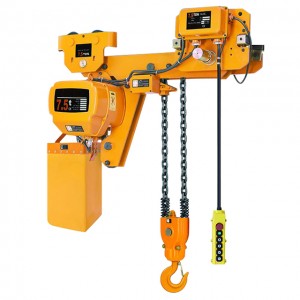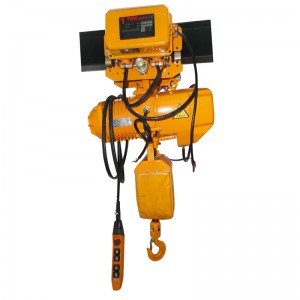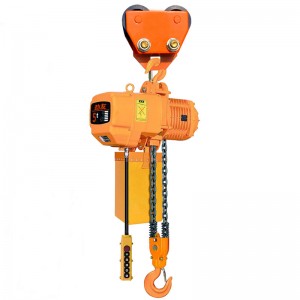The main reason is inertia. Generally shaking occurs at the start of a run and at the stop of a run. The start and stop in the horizontal direction have the highest shaking probability and amplitude compared with the ascent and descent.
If the magnitude of shaking depends on the size of inertia, then the size of inertia is determined by the size of the speed difference. For a single speed, it depends on how fast the speed is.
Under the same speed difference, the longer the hanging chain or the rope, the greater the inertia and the greater the shaking.
When two electric hoists of the same model and specification, that is, the same rated load, the same lifting speed, and the same lifting height, lift the same object separately, the thinner the rope or chain, the greater the shaking rate of the electric hoist. Wire rope electric hoists try not to use messy ropes, because under the same conditions of electric hoist operations, the shaking rate of messy ropes is greater than that of wire rope electric hoists with rope guides.
The same electric hoist, when the shape and state of the suspended objects are different, the shaking produced is also different. Generally speaking, electric hoists can only hang inanimate objects, not people. In fact, it is best not to hang animals. Animals are also alive and alive. They struggle and move during the lifting process, which will cause instability in the lifting process. There will be shaking, which is irregular and uncontrollable. It is easy to overload and is very dangerous. Relatively speaking, hanging a lifeless one shakes less than a living one, and it is safer. Even inanimate objects, irregular shapes, poor hanging or binding, uneven force, or liquid, have a great impact on shaking.
Post time: May-17-2023







